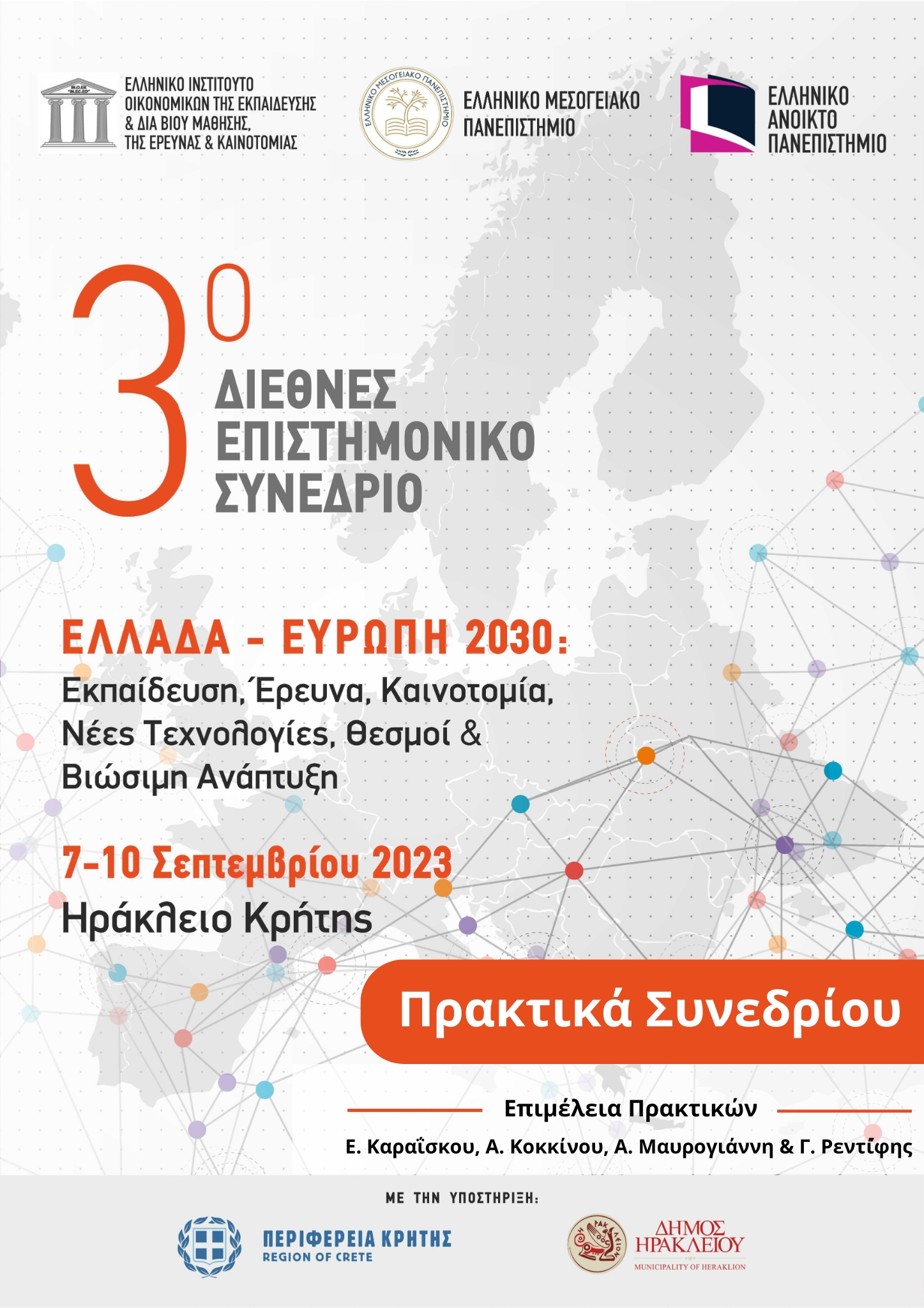Τα προσωπικά και παιδαγωγικά οφέλη της χρήσης του προγράμματος GarageBand για τη μουσική πλαισίωση ενός αφηγηματικού κειμένου από Νηπιαγωγούς και φοιτήτριες Παιδαγωγικών Τμημάτων Προσχολικής Εκπαίδευσης και Αγωγής και η προοπτική της αξιοποίησής του στην

Περίληψη
Σκοπός της εργασίας αυτής συνιστά η εξέταση των κινήτρων της συμμετοχής των εκπαιδευτικών προσχολικής ηλικίας και των φοιτητριών Παιδαγωγικών Τμημάτων Προσχολικής Αγωγής στο πλαίσιο της αξιοποίησης του προγράμματος GarageBand, καθώς και η ανάδειξη των θετικών στοιχείων που εγείρονται από την συμμετοχή τους. Ακόμη, πραγματοποιήθηκε η διερεύνηση των θετικών επιδράσεων σε προσωπικό και παιδαγωγικό επίπεδο μέσα από την ενασχόληση των συμμετεχουσών με το πρόγραμμα GarageBand, καθώς και η προοπτική της «ενσωμάτωσής» του στην τάξη του Νηπιαγωγείου στο μέλλον. Το δείγμα συγκροτήθηκε από 5 Νηπιαγωγούς και 3 φοιτήτριες Παιδαγωγικών Τμημάτων Προσχολικής Ηλικίας της χώρας. Οι συμμετέχουσες ανέφεραν την έκφραση των συναισθημάτων ως το κυριότερο από τα οφέλη που αποκόμισαν σε προσωπικό επίπεδο. Επίσης, το στοιχείο του πειραματισμού αναφέρθηκε ως τα βασικότερο παιδαγωγικό όφελος. Αναφορικά με την προοπτική της αξιοποίησης του προγράμματος GarageBand στην σχολική τάξη, οι συμμετέχουσες δήλωσαν ότι τάσσονται θετικά ως προς το γεγονός της «ενσωμάτωσής» του.
Abstract
The purpose of this work is to examine the motivations of the participation of preschool teachers and students of Pedagogical Departments of Preschool Education in the context of the utilization of the GarageBand program, as well as to highlight the positive elements raised by their participation. Furthermore, the investigation of the positive effects on a personal and pedagogical level was carried out through the participants' engagement with the GarageBand program, as well as the perspective of its "integration" in the Kindergarten class in the future. The sample was made up of 5 Kindergarten teachers and 3 students of Preschool Education Departments in the country. The participants reported the expression of emotions as the main benefit they received on a personal level. Also, the element of experimentation was mentioned as the main pedagogical benefit. Regarding the perspective of utilizing the GarageBand program in the classroom, the participants stated that they were positive about the fact of its "integration".
Λεπτομέρειες άρθρου
- Ενότητα
- Εισηγήσεις

Αυτή η εργασία είναι αδειοδοτημένη υπό το CC Αναφορά Δημιουργού 4.0.
Οι συγγραφείς των άρθρων που δημοσιεύονται στα πρακτικά του συνεδρίου για την «Εκπαίδευση, Δια Βίου Μάθηση, Έρευνα και Τεχνολογική Ανάπτυξη, Καινοτομία και Οικονομία»διατηρούν τα δικαιώματα πνευματικής ιδιοκτησίας επί των άρθρων τους. Άρθρα που δημοσιεύονται στα πρακτικά διατίθενται με άδεια Creative Commons 4.0 και σύμφωνα με την άδεια μπορούν να χρησιμοποιούνται ελεύθερα, με αναφορά στο/στη συγγραφέα και στην πρώτη δημοσίευση για μη κερδοσκοπικούς σκοπούς και με δικαίωμα τροποποίησης μόνον με παρόμοια διανομή (αν αναμείξετε, τροποποιήσετε, ή δημιουργήσετε πάνω στο υλικό, πρέπει να διανείμετε τις δικές σας συνεισφορές υπό την ίδια άδεια όπως και το πρωτότυπο)

